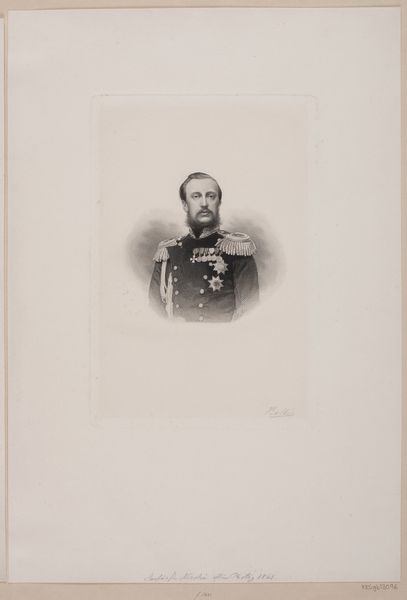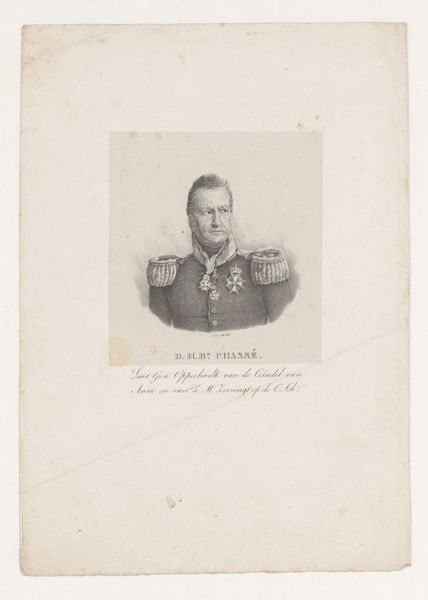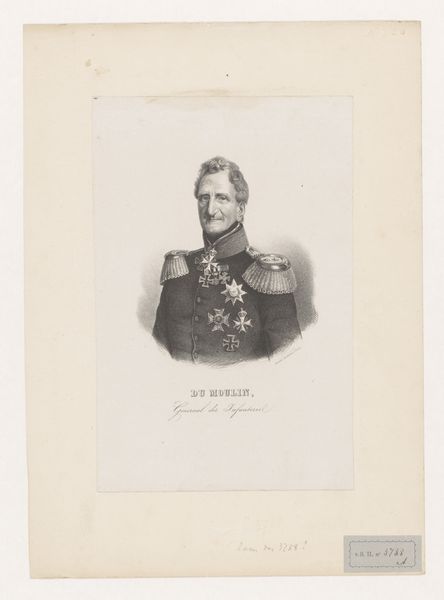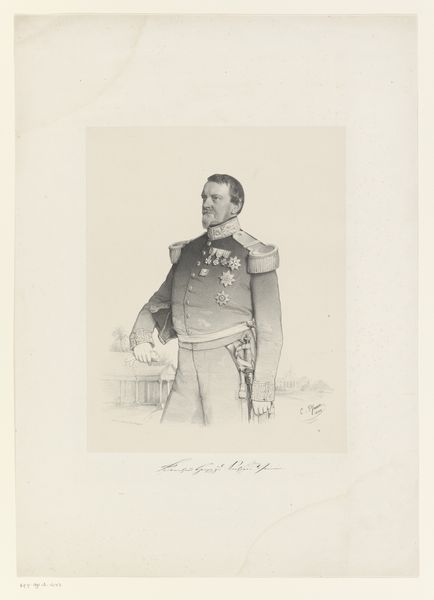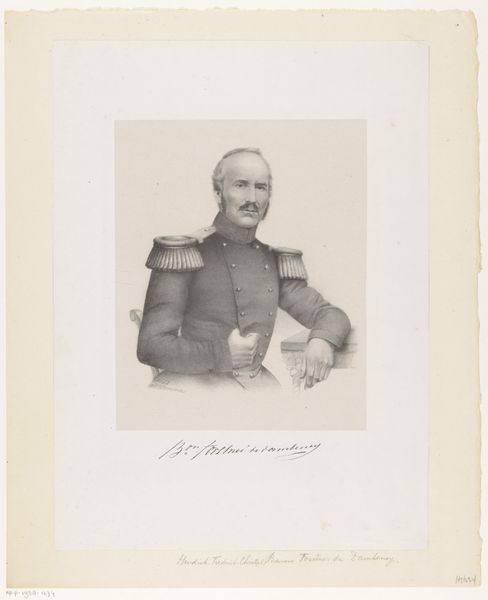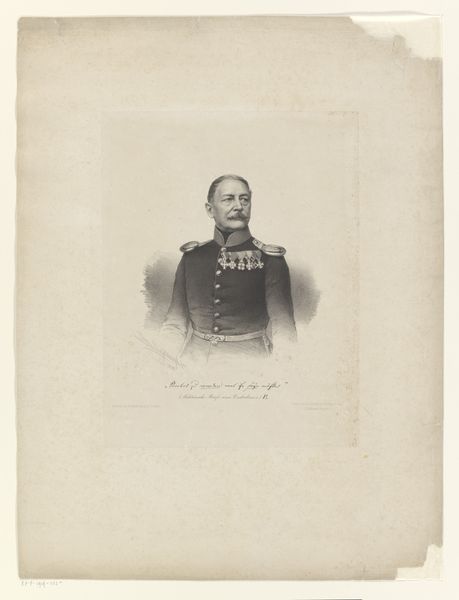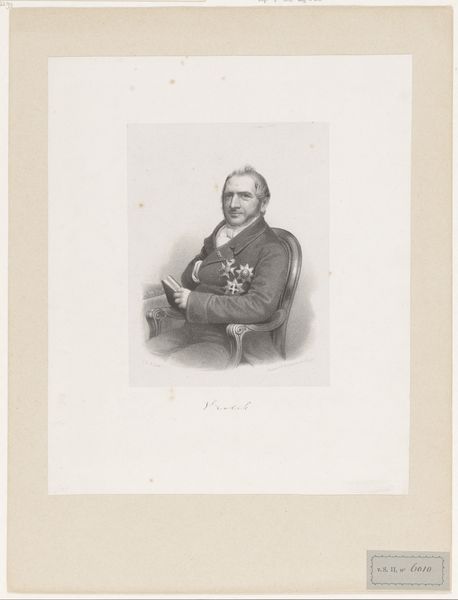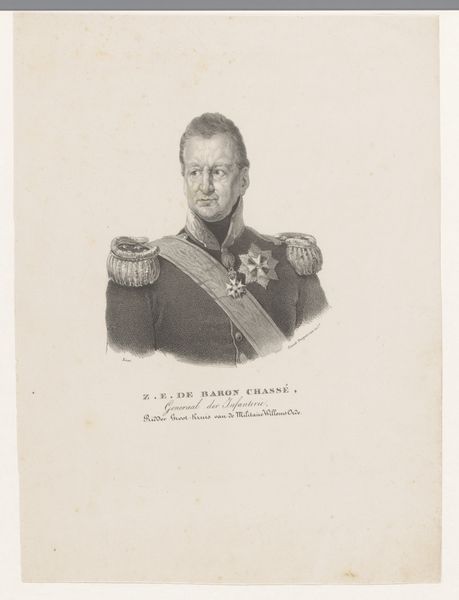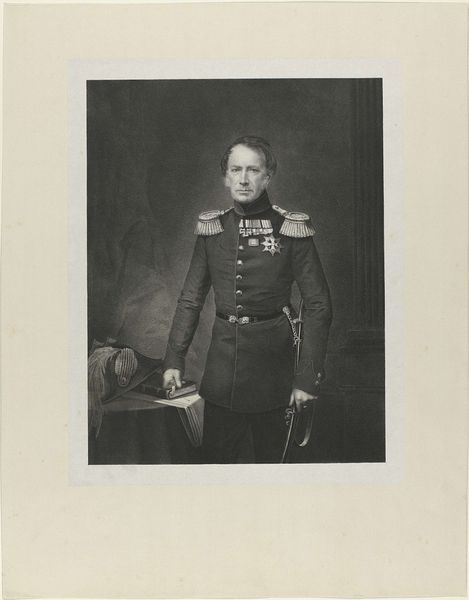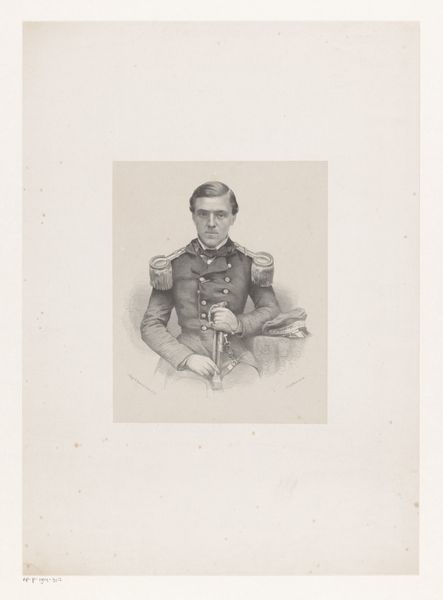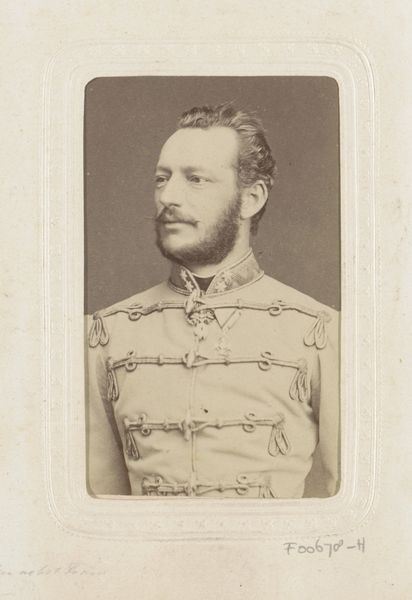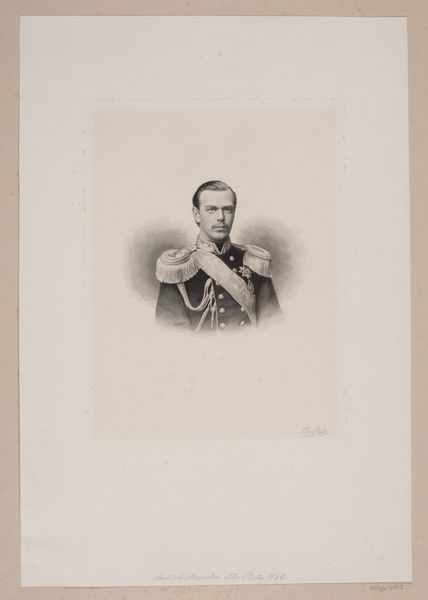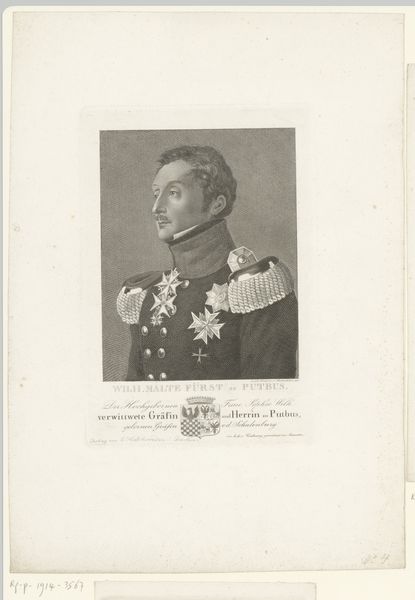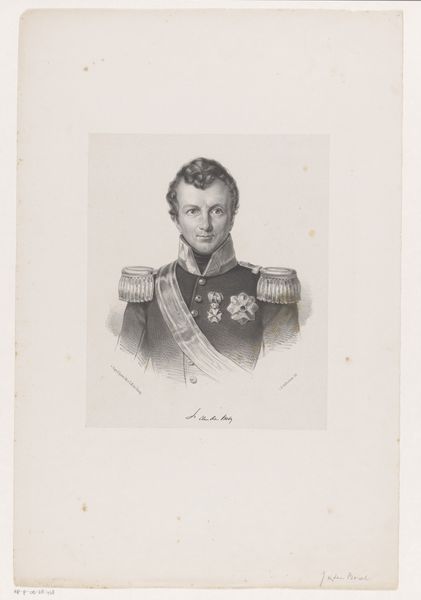
print, graphite
#
portrait
# print
#
romanticism
#
graphite
Dimensions: height 432 mm, width 314 mm
Copyright: Rijks Museum: Open Domain
Curator: Here we have a print created sometime between 1800 and 1900: a "Portret van Friedrich Wilhelm von Rauch," attributed to C. Steckmest. It seems to be a graphite print. Editor: The gentleman definitely projects an air of authority and… well, a touch of melancholy, wouldn’t you say? The romanticism style almost seems to veil his role in upholding perhaps oppressive power structures, with those military embellishments. Curator: Embellishments produced by specific techniques, right? Graphite allowed for fine lines that reproduce textures, observe the fur trim! This kind of meticulous reproduction was key in disseminating images across social classes and reinforcing social hierarchies through standardized portraits. How might access to materials for its production relate to social power? Editor: I am definitely interested in that social hierarchy. Let's break down who this man, von Rauch, was. We're seeing a representation crafted within the structures of power – his pose, attire, medals, they all signify his rank and the social order he embodies. Curator: But think of the labor embedded! Someone had to source the graphite, manufacture it, prepare the paper. Then Steckmest translated von Rauch's authority, a commentary on labor under empire through the lens of reproducible print technology. Editor: It speaks to the romanticization of militarism, doesn't it? This aesthetic softening of very real political power. Are we meant to admire his character, or is it meant as a form of cultural intimidation. How does this image justify his, perhaps violent, social role? Curator: Interesting how focusing on craft brings out these details! Now that our listeners think about these material aspects, the piece reveals more about Romantic-era labor, art production, and print reproduction! Editor: And now with the added historical and political context hopefully a deeper conversation on not just the art’s beauty but it’s purpose within systems of power. Food for thought!
Comments
No comments
Be the first to comment and join the conversation on the ultimate creative platform.
